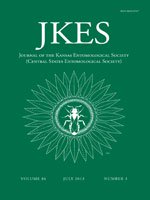The Meropeidae consists of only three rare, highly disjunct Recent species, Merope tuber Newman from eastern North America, Austromerope poultoni Killington from Western Australia, and the recently discovered A. brasiliensis Machado, Kawada, and Rafael from southeastern Brazil. A new genus and new species of meropeid scorpionfly, Burmomerope eureka Grimaldi and Engel, is described in 99 myo amber (mid-Cretaceous: Aptian/Cenomanian-aged) from northern Myanmar. It is one of only two fossils known for the family, the other (Boreomerope Novokshonov: mid-Jurassic of Siberia) known only as a compression fossil wing. Burmomerope shares with the three living species several distinctive, derived features of the antenna, wing, as well as the uniquely large, forcipate male terminalia. Burmomerope plesiomorphically possesses fewer crossveins (though this may be related to its small size), and possibly ocelli; its robust rostrum may be either plesiomorphic or apomorphic. Burmomerope appears to be a stem-group meropeid probably more closely related to the living species than is Boreomerope. The mid-Triassic fossil species Sinothauma ladinica Hong and Zhu is removed from Meropeidae and considered to be a dictyopteran.
How to translate text using browser tools
1 July 2013
The Relict Scorpionfly Family Meropeidae (Mecoptera) in Cretaceous Amber
David A. Grimaldi,
Michael S. Engel
ACCESS THE FULL ARTICLE
Austromerope
biogeography
disjunction
earwigflies
Merope
Myanmar





